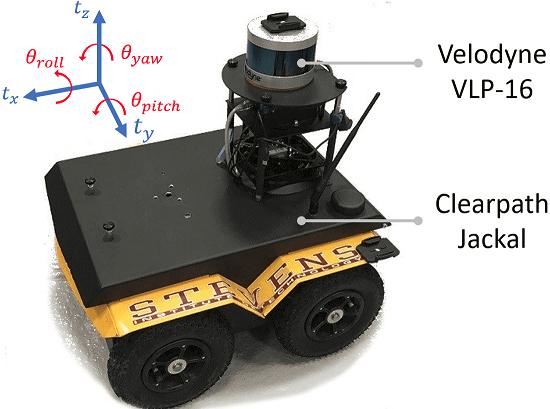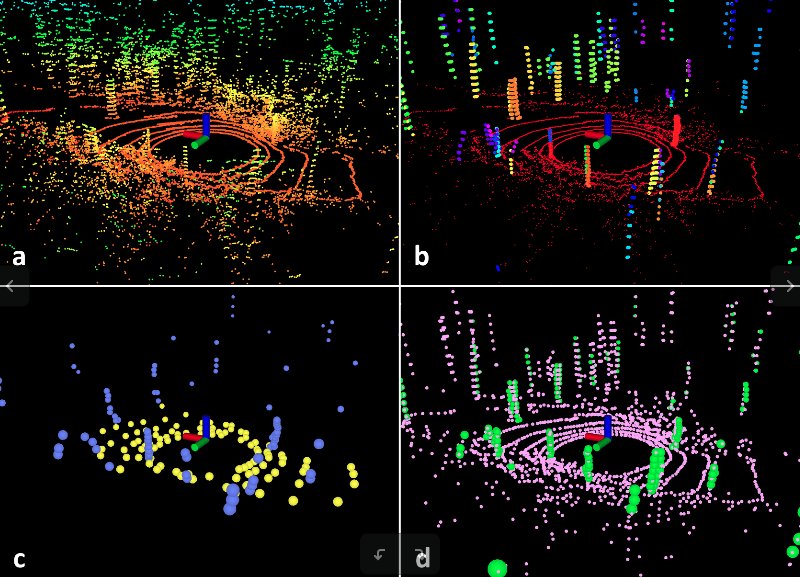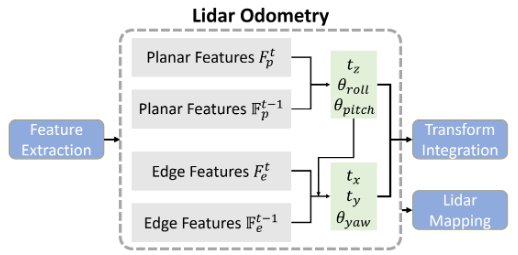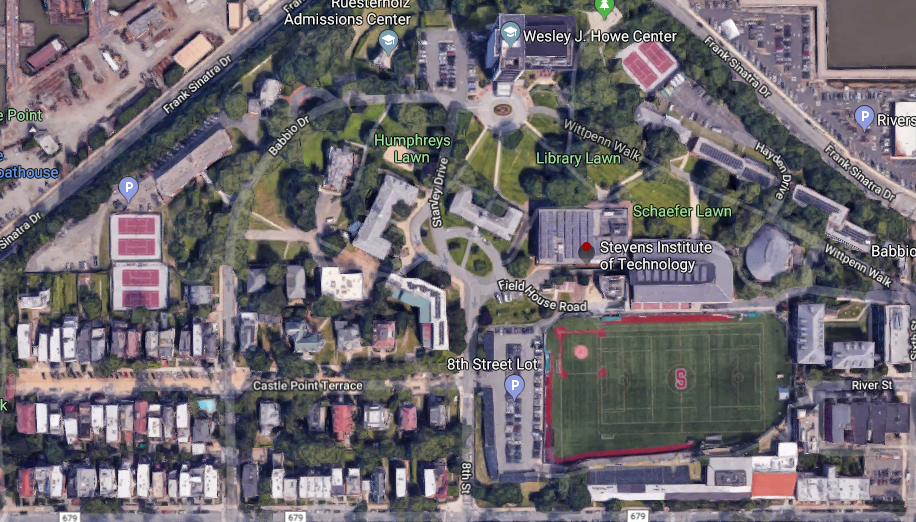RobustFieldAutonomyLab / Lego Loam
Projects that are alternatives of or similar to Lego Loam
LeGO-LOAM
This repository contains code for a lightweight and ground optimized lidar odometry and mapping (LeGO-LOAM) system for ROS compatible UGVs. The system takes in point cloud from a Velodyne VLP-16 Lidar (palced horizontally) and optional IMU data as inputs. It outputs 6D pose estimation in real-time. A demonstration of the system can be found here -> https://www.youtube.com/watch?v=O3tz_ftHV48
Lidar-inertial Odometry
An updated lidar-initial odometry package, LIO-SAM, has been open-sourced and available for testing.
Dependency
- ROS (tested with indigo, kinetic, and melodic)
-
gtsam (Georgia Tech Smoothing and Mapping library, 4.0.0-alpha2)
wget -O ~/Downloads/gtsam.zip https://github.com/borglab/gtsam/archive/4.0.0-alpha2.zip cd ~/Downloads/ && unzip gtsam.zip -d ~/Downloads/ cd ~/Downloads/gtsam-4.0.0-alpha2/ mkdir build && cd build cmake .. sudo make install
Compile
You can use the following commands to download and compile the package.
cd ~/catkin_ws/src
git clone https://github.com/RobustFieldAutonomyLab/LeGO-LOAM.git
cd ..
catkin_make -j1
When you compile the code for the first time, you need to add "-j1" behind "catkin_make" for generating some message types. "-j1" is not needed for future compiling.
The system
LeGO-LOAM is speficifally optimized for a horizontally placed VLP-16 on a ground vehicle. It assumes there is always a ground plane in the scan. The UGV we are using is Clearpath Jackal. It has a built-in IMU.
The package performs segmentation before feature extraction.
Lidar odometry performs two-step Levenberg Marquardt optimization to get 6D transformation.
New Lidar
The key thing to adapt the code to a new sensor is making sure the point cloud can be properly projected to an range image and ground can be correctly detected. For example, VLP-16 has a angular resolution of 0.2° and 2° along two directions. It has 16 beams. The angle of the bottom beam is -15°. Thus, the parameters in "utility.h" are listed as below. When you implement new sensor, make sure that the ground_cloud has enough points for matching. Before you post any issues, please read this.
extern const int N_SCAN = 16;
extern const int Horizon_SCAN = 1800;
extern const float ang_res_x = 0.2;
extern const float ang_res_y = 2.0;
extern const float ang_bottom = 15.0;
extern const int groundScanInd = 7;
Another example for Velodyne HDL-32e range image projection:
extern const int N_SCAN = 32;
extern const int Horizon_SCAN = 1800;
extern const float ang_res_x = 360.0/Horizon_SCAN;
extern const float ang_res_y = 41.333/float(N_Scan-1);
extern const float ang_bottom = 30.666666;
extern const int groundScanInd = 20;
New: a new useCloudRing flag has been added to help with point cloud projection (i.e., VLP-32C, VLS-128). Velodyne point cloud has "ring" channel that directly gives the point row id in a range image. Other lidars may have a same type of channel, i.e., "r" in Ouster. If you are using a non-Velodyne lidar but it has a similar "ring" channel, you can change the PointXYZIR definition in utility.h and the corresponding code in imageProjection.cpp.
For KITTI users, if you want to use our algorithm with HDL-64e, you need to write your own implementation for such projection. If the point cloud is not projected properly, you will lose many points and performance.
If you are using your lidar with an IMU, make sure your IMU is aligned properly with the lidar. The algorithm uses IMU data to correct the point cloud distortion that is cause by sensor motion. If the IMU is not aligned properly, the usage of IMU data will deteriorate the result. Ouster lidar IMU is not supported in the package as LeGO-LOAM needs a 9-DOF IMU.
Run the package
- Run the launch file:
roslaunch lego_loam run.launch
Notes: The parameter "/use_sim_time" is set to "true" for simulation, "false" to real robot usage.
- Play existing bag files:
rosbag play *.bag --clock --topic /velodyne_points /imu/data
Notes: Though /imu/data is optinal, it can improve estimation accuracy greatly if provided. Some sample bags can be downloaded from here.
New data-set
This dataset, Stevens data-set, is captured using a Velodyne VLP-16, which is mounted on an UGV - Clearpath Jackal, on Stevens Institute of Technology campus. The VLP-16 rotation rate is set to 10Hz. This data-set features over 20K scans and many loop-closures.
Cite LeGO-LOAM
Thank you for citing our LeGO-LOAM paper if you use any of this code:
@inproceedings{legoloam2018,
title={LeGO-LOAM: Lightweight and Ground-Optimized Lidar Odometry and Mapping on Variable Terrain},
author={Shan, Tixiao and Englot, Brendan},
booktitle={IEEE/RSJ International Conference on Intelligent Robots and Systems (IROS)},
pages={4758-4765},
year={2018},
organization={IEEE}
}
Loop Closure
The loop-closure method implemented in this package is a naive ICP-based method. It often fails when the odometry drift is too large. For more advanced loop-closure methods, there is a package called SC-LeGO-LOAM, which features utilizing point cloud descriptor.
Speed Optimization
An optimized version of LeGO-LOAM can be found here. All credits go to @facontidavide. Improvements in this directory include but not limited to:
+ To improve the quality of the code, making it more readable, consistent and easier to understand and modify.
+ To remove hard-coded values and use proper configuration files to describe the hardware.
+ To improve performance, in terms of amount of CPU used to calculate the same result.
+ To convert a multi-process application into a single-process / multi-threading one; this makes the algorithm more deterministic and slightly faster.
+ To make it easier and faster to work with rosbags: processing a rosbag should be done at maximum speed allowed by the CPU and in a deterministic way.
+ As a consequence of the previous point, creating unit and regression tests will be easier.






